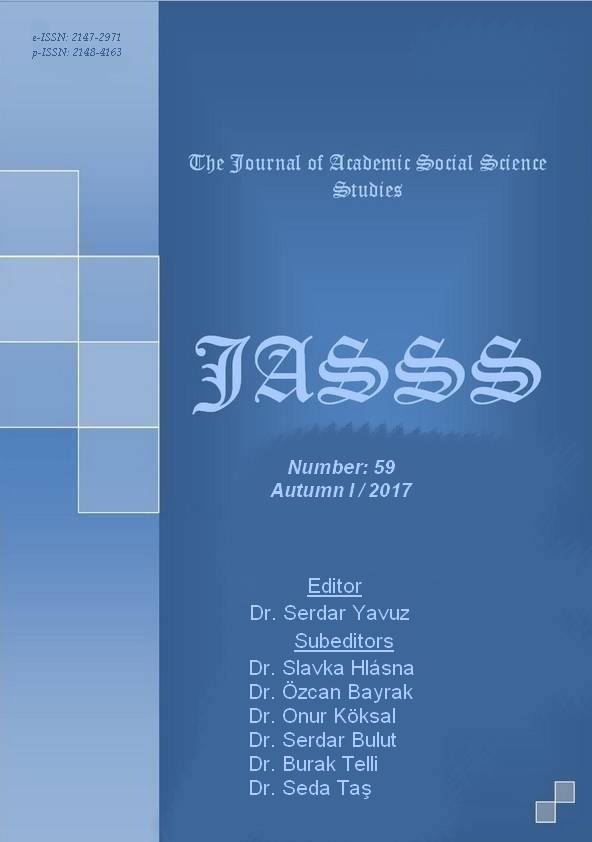Author :
Abstract
Bu çalışmanın amacı ortaokul sekizinci sınıf öğrencilerinin hücre bölünmesi ve kalıtım ünitesinde ele alınan bazı kavramlara yönelik sahip oldukları metaforik algıların incelenmesidir. Olgu bilim desenine uygun bir şekilde yürütülen çalışmanın örneklem grubunu 2015-2016 eğitim-öğretim yılında Adıyaman İlinde yer alan bir devletokulunda öğrenim görmekte olan 20 öğrenci oluşturmuştur. Çalışmada öğrencilere “Kromozom, gen, fenotip, parça değişimi ve mitoz……gibidir; çünkü……” cümle kalıbı bu 5 farklı kavrama uyarlanarak soru olarak yöneltilmiş ve öğrencilerden boşlukları doldurmaları istenmiştir. Çalışma sonucunda elde edilen veriler betimsel analiz yoluyla çözümlenmiştir. Verilerin analizi sonucunda öğrencilerin bu ünite dahilinde ele alınan 5 farklı kavrama ilişkin toplamda 51 tane farklı metafor oluşturdukları sonucuna ulaşılmıştır. Elde edilen bu metaforlar “Canlı, Özellik/Düşünce/Soyut Kavramlar, Araç/Nesne ve Süreç/Eylem” olmak üzere 4 farklı kavramsal kategori altında toplanmıştır.Ayrıca en fazla metafor 36 tane olmak üzere özellik/düşünce/soyut kavramlar kategorisinde üretilmiştir ve aynı şekilde en fazla parça değişimi kavramı ile ilgili ‘takas (9)’ metaforudur. Öğrencilerin büyük çoğunluğunun DNA, kromozom ve gen kavramlarının büyüklük sıralamasında bir yanılgıya sahip oldukları görülmüştür.Çalışma sonuçlarına göre, öğrencilerin soyut, karmaşık veya kuramsal bir olguyu anlamada ve özellikle açıklamadaki yetersizliklerini giderebilmek amacıyla metaforik düşünmeyi geliştirici etkinliklerin fen bilimleri dersinde kullanılması önerilebilir.
Keywords
Abstract
The purpose of the present study was to examine eighth grade students’ meta-phorical perceptions in relation to certain conceptions in the specific context of cell division and heredity. The study reflects on the analysis of conceptual metaphors by phenomenological method. The working group of the study was comprised of 20 eight-grade students enrolled in a state school located in the province of Adıyaman. Students participated in the study were presented a form consisting of such questions “chromosome, gene, phenotype, crossing-over and mitosis is as……because….” and asked to fill in the blanks given in the questions. Data collected by the forms were given in descriptives and percentages. In conclusion, 51 metaphors related to 5 distinct conceptions were explored in the analysis. These metaphors were categorized into 4 categories labelled as “living being”, “characteristics/thought/abstract”, “instrument/object” and “course/action”. It was also observed that the most referred category was “characteristics/thought/abstract” generating totally 36 metaphors while the most referred metaphor was “barter” associated with the conception of crossing-over. Most of the students were unable to put in the correct order of DNA, chromosome and gene by size. Considering all these results, it might be suggested that the incompetency of understanding abstract, complex and theoretical phenomena should be challenged by constructive activities improving metaphorical thinking in science courses.





